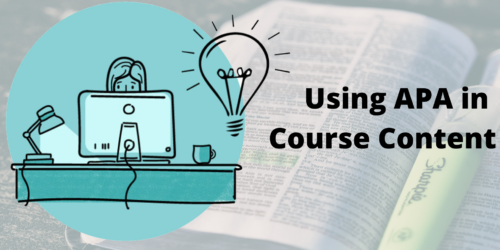
Smart Solutions: Authentic Assessment for GenAI-Era Academic Integrity
The rise of generative Artificial Intelligence (genAI) in education has brought significant benefits, but it sometimes poses challenges to academic integrity. Traditional assessments are increasingly vulnerable to misuse of GenAI tools, which can generate human-like responses to various tasks. Authentic assessment, however, offers a promising solution to this problem by focusing on real-world applications, critical thinking skills, problem-solving, and the application of concepts in practical contexts (Forsyth & Evans, 2019) that are difficult for genAI to replicate. This post provides strategies for how you can utilize authentic assessment to mitigate academic integrity issues in assessments, supported by practical examples.
Understanding Authentic Assessments
Authentic assessment refers to assessment methods that require students to apply their knowledge and skills to real-world scenarios (McArthur, 2023). Some examples include project-based learning, case studies, portfolios, and presentations.
Authentic Assessment:
- Promotes Deep Learning and Critical Thinking: Authentic assessments require students to engage deeply with course material, fostering a better understanding of the subject matter. For instance, a business course might include a project where students develop a marketing plan for a real company. This task requires research, analysis, and creativity, making it difficult for students to rely solely on genAI tools.
- Reduces Opportunities for Plagiarism: Since authentic assessments are often unique and tailored to specific contexts, they reduce the likelihood of students finding ready-made answers online or generating them through genAI. For example, students might be asked to create a documentary on a local historical event in a history course. This task involves original research and personal engagement with the community, which cannot be easily replicated by genAI.
- Encourages Collaboration and Communication: Many authentic assessments involve group work and presentations requiring students to collaborate and communicate effectively. These skills are challenging for genAI to mimic. For example, in an engineering course, students might work in teams to design and build a prototype of a sustainable energy solution. The collaborative nature of this project ensures that each student’s contribution is unique and verifiable.
- Provides Continuous Feedback and Reflection: Authentic assessments often include continuous feedback and reflection opportunities, helping students improve their work over time. For instance, in a creative writing course, students might maintain a portfolio of their work, receiving feedback from peers and professors throughout the semester. This iterative process makes it difficult for students to pass off AI-generated content as their own (Anthology, 2023).
Examples and Strategies for Implementing Authentic Assessments
- Service-Learning Projects
Strategy: Service-learning projects require students to engage with the community, apply theoretical knowledge to real-world problems, and reflect on their experiences. This hands-on approach makes it challenging for students to use AI-generated content, as the work is unique and context-specific.
Example: You may assign students to partner with local non-profits to address community issues. Students must identify a problem, develop a plan, and implement a solution, documenting their process and outcomes in a reflective report.
- Capstone Projects
Strategy: Capstone projects integrate knowledge from multiple courses and require students to demonstrate their skills in a comprehensive, practical task. The iterative process of design, testing, and revision ensures that students’ work is original and reflective of their learning journey.
Example: Students in their final year can complete a capstone project where they design, build, and test a prototype. Students present their projects to a panel of industry experts and receive feedback.
- Role-Playing Simulations
Strategy: Role-playing simulations immerse students in complex scenarios that require critical thinking, research, and interpersonal skills. The dynamic nature of these simulations makes it difficult for students to rely on pre-generated AI responses.
Example: You could implement role-playing simulations where students act as professionals to demonstrate a topic or concept. Each student must research their assigned position and develop strategies for demonstration.
- Reflective Journals
Strategy: Reflective journals encourage students to engage deeply with the content and reflect on their learning experiences. The personal and evolving nature of these journals makes it challenging for students to use AI-generated content, as the reflections are unique to each student’s journey.
Example: You could ask your students to maintain a personalized, content-related and reflective journal throughout the semester, documenting their thoughts on course material, class discussions, and personal insights.
- Peer Review and Feedback
Strategy: Peer review fosters a collaborative learning environment and encourages students to engage critically with their peers’ work. The process of giving and receiving feedback helps students develop their writing and analytical skills, making it difficult to pass off AI-generated content as their own.
Example: You can incorporate non-graded peer review sessions where students critique each other’s work and provide constructive feedback. Students must revise their work based on the feedback received.
It is important to note that students can use genAI as part of their learning processes in Authentic Assessments (e.g., for brainstorming ideas, researching, designing, analyzing, etc.), but you might consider supporting students to use it in ethical and educative ways.
Considerations for Implementing Authentic Assessments
- Design Unique and Context-Specific Tasks: Create assignments tailored to the course’s specific context and the students’ experiences. This reduces the likelihood of finding ready-made answers online.
- Incorporate Multiple Stages: Break down assessments into multiple stages, such as proposal, draft, and final submission. This allows for continuous feedback and makes it harder for students to submit AI-generated work.
- Use Real-World Problems: Design assessments around real-world problems that require students to apply their knowledge in practical ways. This approach emphasizes critical thinking and problem-solving skills.
- Encourage Collaboration: Incorporate group projects and peer review sessions to promote collaboration and communication. These activities help students learn from each other and reduce opportunities for academic dishonesty.
- Provide Clear Guidelines: Clearly outline the expectations for academic integrity and the use of genAI tools in your assessment instructions. Discuss the importance of original work and the consequences of academic misconduct.
N.B: The title of this post and some examples were generated using Co-pilot.
Works Cited
Anthology (2023). AI, Academic Integrity, and Authentic Assessment: An Ethical Path Forward for Education. AI, Academic Integrity, and Authentic Assessment (anthology.com)
Forsyth, H., & Evans, J. (2019). Authentic assessment for a more inclusive history. Higher Education Research and Development, 38(4), 748–761.
McArthur, J. (2023). Rethinking authentic assessment: Work, well-being, and society. Higher Education, 85, 85–101 https://doi.org/10.1007/s10734-022-00822-y.






